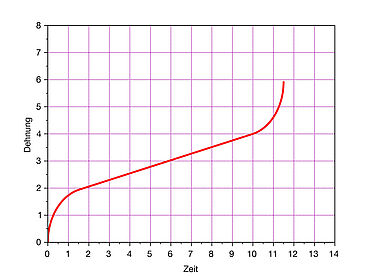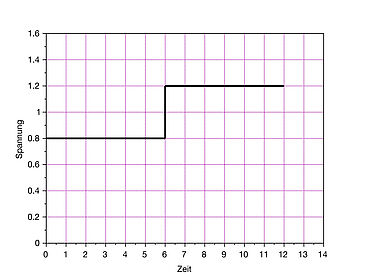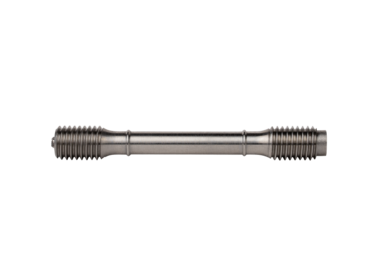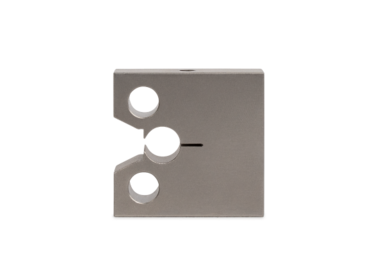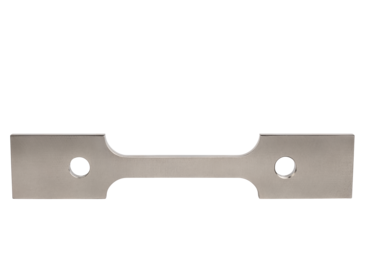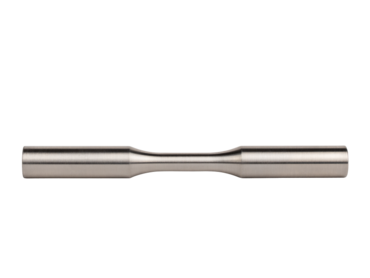Creep Test
The creep test, in some instances referred to as stress relaxation test, is a destructive materials testing method for determination of the long-term strength and heat resistance of a material. When running a creep test, the specimen is subjected to increased temperature conditions for an extended period of time and loaded with a constant tensile force or tensile stress. In terms of duration, a differentiation is made between short term tests up to approximately 10,000 hours and long term tests starting at approximately 10,000 hours.
The objective of a creep test is to predict the life span of a material under certain operating conditions. For the performance of creep tests according to different standard requirements, ZwickRoell offers high-precision creep testing machines.
Definition of creep Characteristic values Creep strength 3 phases of a creep test Overview of test types Specimen shapes Relevant standards Testing machines FAQ's
What is meant by creep?
Creep is the term used to describe the plastic deformation of a material over an extended period of time. Even small loads and elevated temperatures over a longer time period can cause permanent deformation of materials such as metals, ceramics, plastics, etc.
The following factors significantly influence creep properties:
- Extent of the load,
- Temperature level, and
- Duration of the load application.
What characteristic values are determined with a creep test?
- Time for rupture
- Permanent strain
- Creep rupture strain
- Creep rupture necking
- Creep limit time
- Stain limit time (yield point)
- Creep modulus (the ratio of stress to strain as a function of the duration of the load application)
- Creep strength
- Creep strain
- Stress relaxation
What is creep strength?
Creep strength provides an indication of the service life of a material under specified operating conditions. It provides the mechanical stress value that will cause the material to fail, while held at constant temperature for a certain amount of time. This value is determined by using creep tests and is critical for the use of materials in various applications. Aerospace components and engine parts may only undergo minimal deformation, even when subjected to large loads. If a component has experienced creep strain, it will not regain its original shape even after load removal. If the material is subjected to too much stress over a long period of time, cracks and fracture can occur.
The three phases of the creep test
The creep test is divided into three stages—primary creep, secondary creep and tertiary creep. The creep curves provide information about the creep behavior over a specified period of time.
In the primary creep stage, the mechanical strength of the material increases due to the plastic deformation and the creep speed subsequently decreases.
With advanced strain and test duration, hardening and softening gradually set in. This stage is characterized by a constant creep speed and designated as the secondary creep stage.
In the tertiary creep stage, damage to the material causes the creep speed to increase significantly, ending in specimen fracture. The tertiary creep stage only takes a very short period of time when measured in terms of the service life of a material. Secondary creep consumes the largest part of the overall service life.
Relevant standards for creep tests on metals
- ISO 204 Metallic materials – Uniaxial creep testing in tension
- ASTM E139 Standard Test Methods for Conducting Creep, Creep-Rupture, and Stress-Rupture Tests of Metallic Materials
- EN 2002-005 Test method for metallic materials – Part 005: Uninterrupted creep and stress-rupture testing
- ASTM E328 Standard Test Methods for Stress Relaxation for Materials and Structures
- ISO 15630-3 Steel for the reinforcement and prestressing of concrete - Test methods
- ASTM G129 Standard Practice for Slow Strain Rate Testing to Evaluate the Susceptibility of Metallic Materials to Environmentally Assisted Cracking
- ASTM F519 Standard Test Method for Mechanical Hydrogen Embrittlement Evaluation of Plating/Coating Processes and Service Environments
- ASTM F1624 Standard Test Method for Measurement of Hydrogen Embrittlement Threshold in Steel by the Incremental Step Loading Technique
- ASTM E1457 Standard Test Method for Measurement of Creep Crack Growth Times in Metals
- ASTM E2760 Standard Test Method for Creep-Fatigue Crack Growth Testing
- ASTM E647 Standard Test Method for Measurement of Fatigue Crack Growth Rates
- ASTM E2714 Standard Test Method for Creep-Fatigue Testing
- ASTM E606 Standard Test Method for Strain-Controlled Fatigue Testing
- ISO 12106 Metallic materials - Fatigue testing - Axial-strain-controlled method
- Validated Code-of-Practice for Strain-Controlled Thermo-Mechanical Fatigue Testing
- ISO 12111 Metallic materials - Fatigue testing - Strain-controlled thermomechanical fatigue testing method
- ASTM E2368 Standard Practice for Strain Controlled Thermomechanical Fatigue Testing
Relevant standards for creep tests on plastics
- ISO 899-1 Determination of creep behavior - Part 1: Tensile creep
- ISO 899-2 Determination of creep behavior - Part 2: Flexural creep by three-point loading
- ASTM D2990 Standard Test Methods for Tensile, Compressive and Flexural Creep and Creep-Rupture of Plastics
- ISO 16770 Plastics – Determination of environmental stress cracking (ESC) of polyethylene – Full-notch creep test (FNCT)
- ISO 3384-1 Rubber, vulcanized or thermoplastic – Determination of stress relaxation in compression
Frequently asked questions about creep testing
The creep test is a destructive materials testing method for determination of the long-term strength and heat resistance of a material. When running a creep test, the specimen is subjected to increased temperature conditions for an extended period of time and loaded with a constant tensile force or tensile stress.
The objective of a creep test is to predict the life span of a material under certain operating conditions.
For a creep test, the specimen is subjected to increased temperature conditions for an extended period of time and loaded with a constant tensile force or tensile stress. In terms of duration, a differentiation is made between short term tests up to approximately 10,000 hours and long term tests starting at approximately 10,000 hours.
To perform these tests, we use a creep testing machine. The test axes are equipped with tensile specimen grips, which can be used to hold the specimen without slippage. Depending on the requirements and the test, different heating systems can be used to simulate the different ambient temperatures.
Requirements and the performance of creep tests, in some instances referred to as stress relaxation tests, are specified in a series of ISO and ASTM standards in the metals and plastics industries.
Creep is the term used to describe the plastic deformation of a material over an extended period of time. Even small loads and higher temperatures over a long time period can cause permanent deformation of material such as metals, ceramics, plastics, etc.
Significant influencing factors:
- Extent of the load,
- Temperature level, and
- Duration of the load application.
